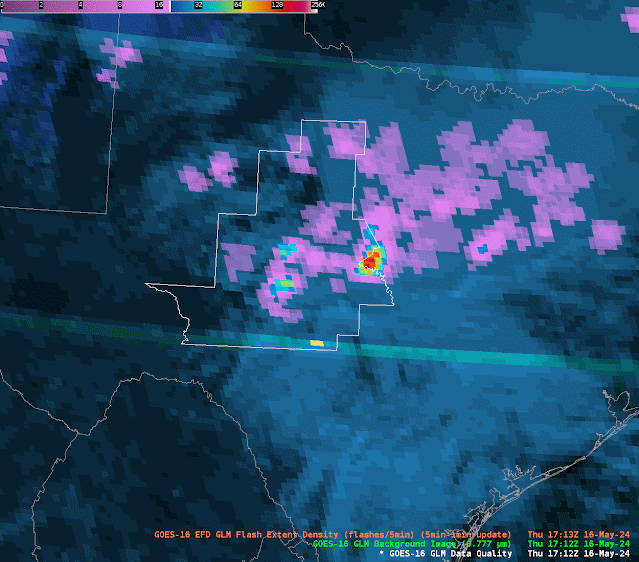Here is an inspection of the GLM Background and DQP to get a feel for the reliability of the GLM flash extent density (FED) data. Below you will notice a four panel display with GLM quality on the upper left, the GLM background image on the upper right, the GLM flash extent density on the bottom left, and the 0.64 visible satellite imagery on the bottom right.
You should be able to make out a sub-array boundary going horizontally (upper left panel) AND also in the GLM background image (upper right panel). In the top right and both bottom panels you can make out strong convection taking place with two cells (one in the southern portion of the CWA, and one just to the south and along the CWA border). I did my best to put my AWIPS cursor along the sub array boundary. You will notice in the bottom right corner that the cursor is actually between the two convective cells. However, you can make out some weaker GLM FED signals along the sub array boundary where you are in-between the two cells. This demonstrates uncertainty around the validity of the GLM data just to the south of the northern convective cell. They are weaker GLM FED returns with only a minute or so of lag among the various elements being shown. And with these returns being upshear of the northern cell it is likely that this is not related to anvil lightning activity. In this example with the relatively close proximity of the two cells one cannot be sure that the GLM data is incorrect, but with the GLM returns showing up on the sub array boundary this does increase uncertainty around this portion of the GLM flash extent density data.
Below is the same four panel, but with the ground based earth lightning detection network showing as verification for lightning.
Notice how there is a weaker return with the GLM flash extent density on the southern portion of the northern cell, but the detection (lower right panel displays best) shows the lightning verification within the convective cloud shield and not past the southern portion of the northern cell like in the GLM FED (bottom left panel). This demonstrates that one should question a portion of the GLM flash extent density output. By using the GLM data quality and background products one can get a better feel for where the GLM FED data may not be reliable. If something doesn’t make sense with regard to GLM output then this product can verify that suspicion.
– 5454wx



























